Exhibits

Linguistic pattern across Alaska and Russia. The Iñupiat language and culture is nearly the largest covering all of Northern Alaska.
Iñupiat Origins
About 4000 years ago, due to the conditions of the “Little Ice Age,” a group called the Thule peoples split into multiple groups. From this split, amongst others, emerged the Iñupiat people who then spread eastward across the Arctic. The Iñupiat people – whose culture centers around the traditions of family, community, dance, storytelling, and hunting – have been since considered indigenous to Arctic regions, most notably Canada and Alaska.
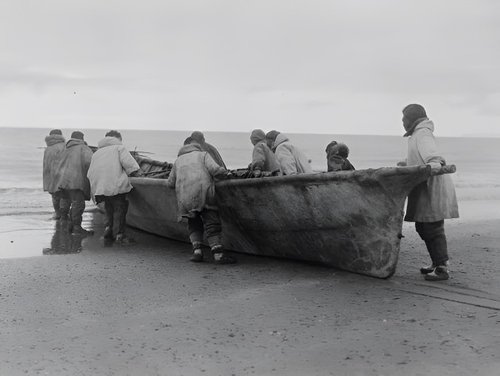
Whaling Boat
Iñupiat Relationship with the Sea
The Iñupiat people almost exclusively in the Arctic Circle where the environmental conditions make even simple activities challenging. With long stretches of 24-hour darkness and frigid winters every year, the ocean served as an important food source for the local Iñupiat community. This area is known for traditional whale hunting, and this practice is now federally recognized. Whales or akbwêk in the Iñupiaq language, not only provided neat and oil but also bones that could be used for a variety of purposes.
Another important animal were local seals which were called nětyĭk. These seals served as a food source and also provided products like oil and skin. Walruses or ai’bwêk were also relied on as a food source. They provided food and blubber, but also ivory, which was an asset for toolmaking and indigenous part. (Congressional Ethnographic Report, Powell, 1892)

Iñupiat Man in a Kayak
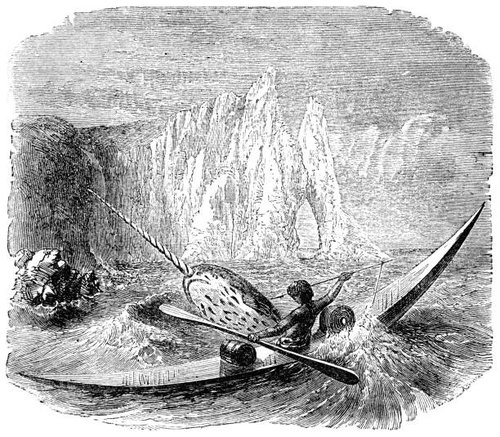
Narwhal Hunting
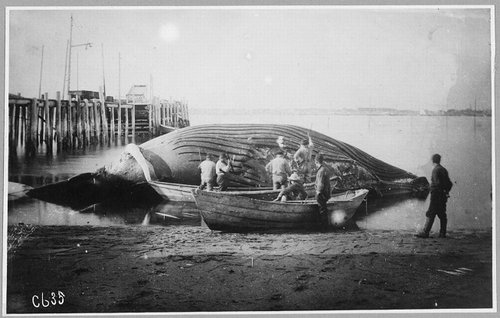
Harvesting a humpback whale

Traditional canvas tent: tupikaaq
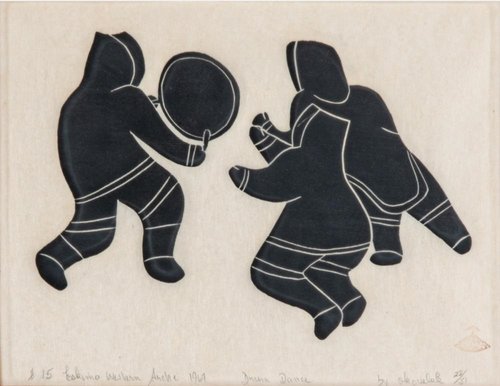
Drum dance

Annual dog sled race (see article)
Modern Iñupiat Cultural Revival
As a result of the forced relocation and colonization of Iñupiat regions, the Iñupiat people's experience a loss of culture that they now work to reclaim. This resurgence and revival of Iñupiat culture centers around core cultural practices such as dog sledding, whale hunting, and ivory carving. Communities receive special permissions to continue subsistence hunting of Arctic mammals, where all parts of the animal are harvested and used for traditional food, tools, clothing, and art, such as ivory carving (Walrus Ivory, n.d.). The Iñupiat people have also been working to revive the tradition of dog sledding through races like the Nunavut Quest, a sled dog race that emphasizes the cultural significance of dog sledding (CBC News 2022).

Modern Iñupiat dancers (Photo credit: Iñupiat Heritage Center)
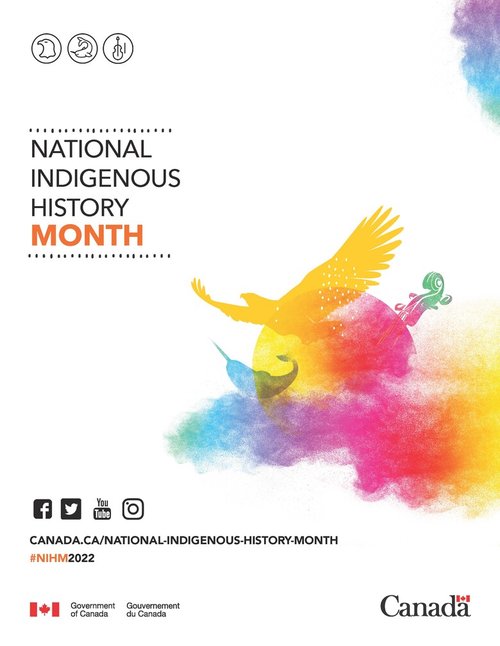
In conjunction with Canada's National Indigenous History Month, this exhibit:
- highlights indigenous Alaskans living at one of the most northern points on the planet, specifically the Iñupiat communities in Point Barrow, Alaska.
- combines archaeological Artifacts and Ethnographic accounts recovered in the early 1900s by Calvin Brown, a former University of Mississippi Professor.
- See also: a selection of the Calvin Brown collection in eGrove
Artifacts are used to highlight elements of Iñupiat life such as: whaling, seal hunting, cross country trade, and the Iñupiat community’s deep connection with their environment.
